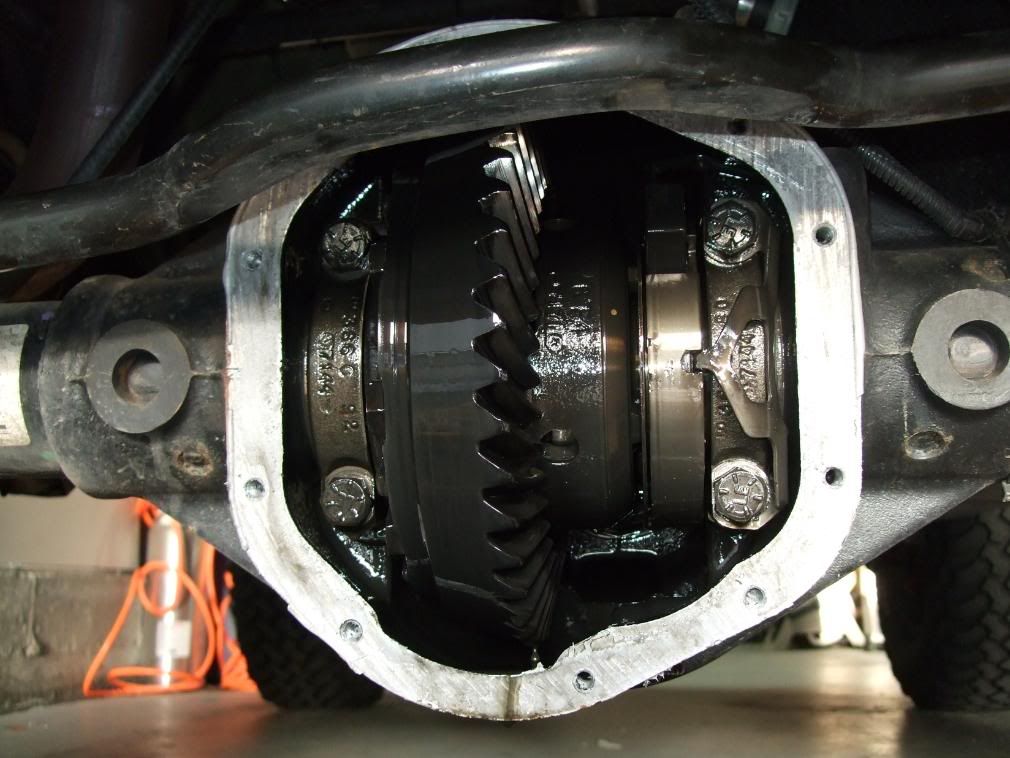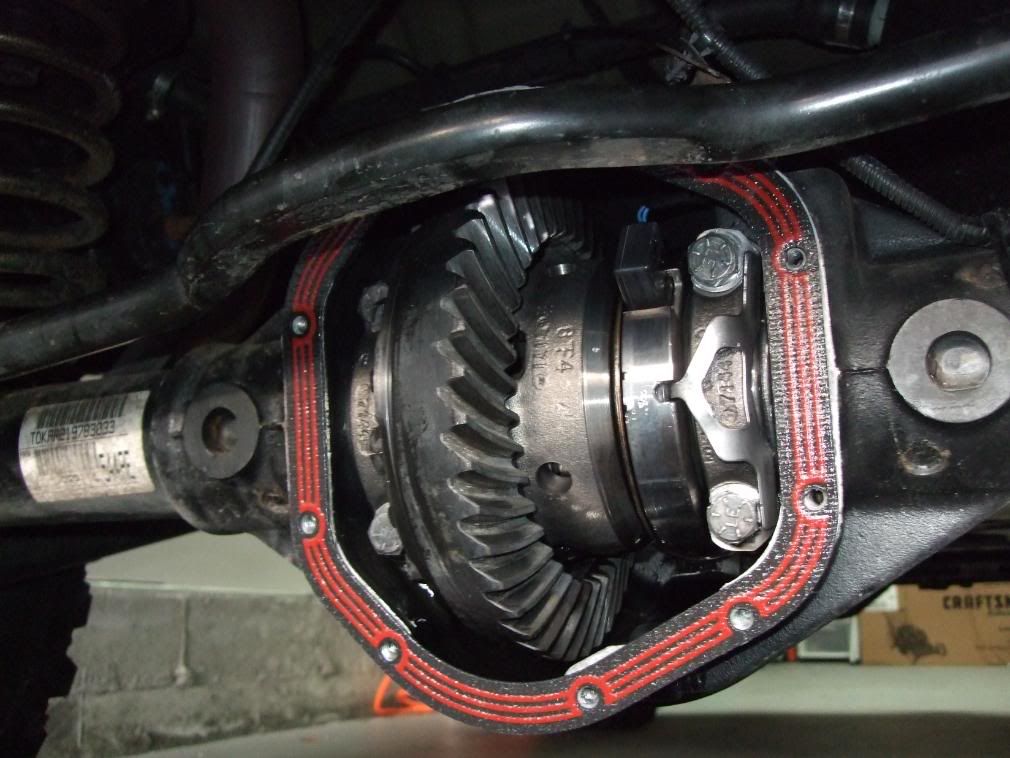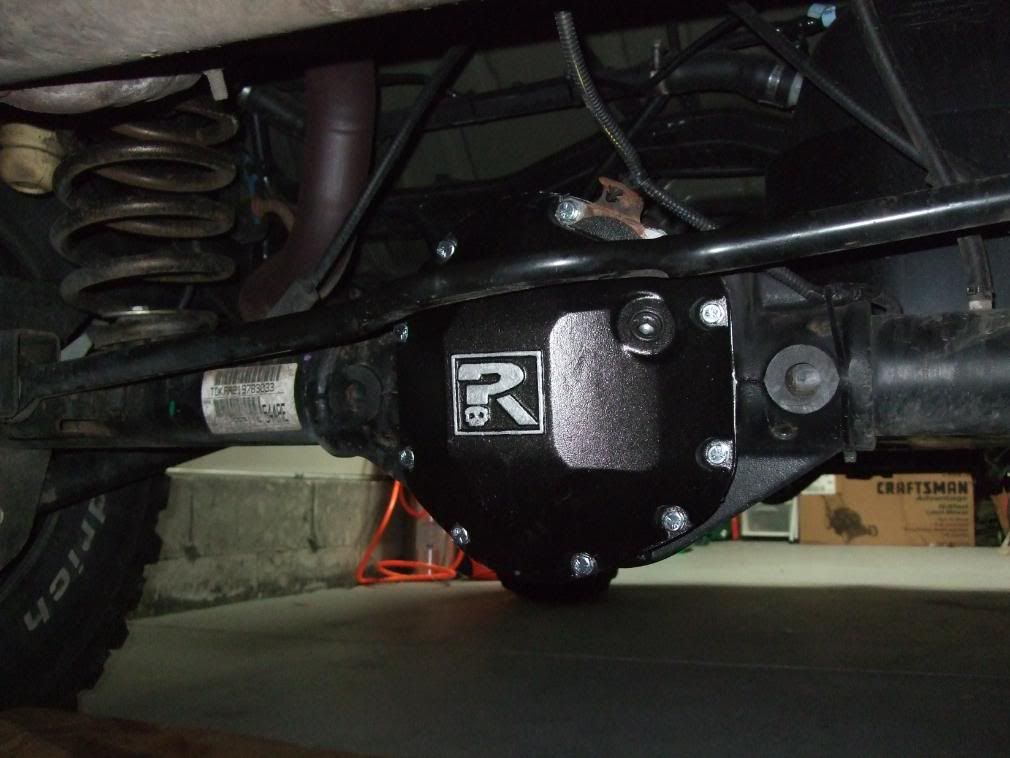New gears = Broken axles?????
#1
JK Enthusiast
Thread Starter
Join Date: Apr 2008
Location: hawaii
Posts: 382
Likes: 0
Received 0 Likes
on
0 Posts
How many of you have broken axles after you installed your 4.88's and/or 5.13's? I keep hearing that there is a risk but with so many profiles saying they have 5.13's in their profiles I haven't seen much info on broken axles. Is this a thing of older jeep models that has fixed from the factory?
By next year I'd like to run 37 inch tires and 5.13's however enough talk of broken axles has me a little gun shy to pull the trigger on that setup. The more info the merrier!
By next year I'd like to run 37 inch tires and 5.13's however enough talk of broken axles has me a little gun shy to pull the trigger on that setup. The more info the merrier!
#2
JK Super Freak
Do you mean blown diffs, or axles?

Generally, the higher the numerical ratio, the less metal is avail for gear teeth, etc, as there are more of them, etc.

In some cases, the point of diminishing return is reached when the new gears are too delicate for durability.
5.13's are probably not too delicate, if that helps.

(Also - people who spend $ on gears, etc...tend to be more hardcore, and, tend to wheel harder, as a tendancy not a rule, than people who don't....and, therefore, are part of a group who tend to have more failures, of EVERYTHING, as they are pushing the envelope harder than others are...so a break might not have to do with the mod itself, as much as who DOES the mod, etc.)

Generally, the higher the numerical ratio, the less metal is avail for gear teeth, etc, as there are more of them, etc.

In some cases, the point of diminishing return is reached when the new gears are too delicate for durability.
5.13's are probably not too delicate, if that helps.

(Also - people who spend $ on gears, etc...tend to be more hardcore, and, tend to wheel harder, as a tendancy not a rule, than people who don't....and, therefore, are part of a group who tend to have more failures, of EVERYTHING, as they are pushing the envelope harder than others are...so a break might not have to do with the mod itself, as much as who DOES the mod, etc.)
#3
JK Enthusiast
Thread Starter
Join Date: Apr 2008
Location: hawaii
Posts: 382
Likes: 0
Received 0 Likes
on
0 Posts
Sorry, blown differentials is what I meant. Is one gear maker better than another? Manufacturing process, or materials, etc..... What exactly is the deciding factor in what makes a gear too "delicate"?


#4
JK Super Freak
As mentioned in the post above yours...what makes the higher/deeper ratios more delicate is that you need more teeth to get that ratio.
If one gear is meshing with another one....its the teeth that mesh....and, the torque multiplication or reduction, etc....is based upon the comparitive number of teeth in the one driving the other.
If you looked at your 10 speed bike (Or whatever they use now a days...) and how 10th gear was the biggest drive gear (By the pedals) driving the smallest gear in back, on the rear tire.
That's because one rotation of the big gear would produce MANY rotations of the smaller gear....so you go FASTER on your bike.
And, if you wanted more power to get up that steep hill, you put it into 1st gear, the smaller drive wheel by the pedals, driving the LARGEST wheel on the rear gears.
Same w/o the chain...which, is REALLY just a floppy gear, as each link is just like a gear tooth as far as meshing goes.

So - to get a 5.13 gear, we need more teeth than on a 3.21 gear, because we need it to muiltiply torque, allow more power, more like 1st gear on your bike, etc.
In a gear set, in a diff, we cannot make the gear bigger around, we need to make it take more of the drive gear's rotations for each of its OWN rotations....by making it with more teeth...for the SAME DIAMETER.
OK, we always have a 360 degree trip around a gear like that....and, we can have pretty much any number of teeth....so, to illustrate the concept of deep and delicate gears...
Imagine a gear with one tooth for every degree of its circumference, 360 teeth.
Now imagine one with 4 teeth, at say 90 degree positions.
OK - I have to MAKE that now....
Lets say each degree of circumference is an inch...my 360 tooth gear is 360 inches in circumference, and every tooth has a one inch base.
Now lets look at my 4 tooth version....each tooth has 1/4 of the circumference as its base, or 90 inches per base...WAAAAAAY thicker per tooth than the one with 360 teeth.

Make sense yet?

The more teeth, the smaller they have to be to fit....and, the smaller the tooth, the easier it is to snap one off.

__________________________________________________ ___________
And, sure, the metallurgy involved with gears is very quality dependent....cheaper gears using less durable metals, and high quality gears, that may have exotic alloys, or have been cryogenically treated, etc....cost more.
MOST of the gears we see are actually made by the same companies, and they just private label them....common practice in the industry.
So, some gears are not as good as others.

If one gear is meshing with another one....its the teeth that mesh....and, the torque multiplication or reduction, etc....is based upon the comparitive number of teeth in the one driving the other.
If you looked at your 10 speed bike (Or whatever they use now a days...) and how 10th gear was the biggest drive gear (By the pedals) driving the smallest gear in back, on the rear tire.
That's because one rotation of the big gear would produce MANY rotations of the smaller gear....so you go FASTER on your bike.
And, if you wanted more power to get up that steep hill, you put it into 1st gear, the smaller drive wheel by the pedals, driving the LARGEST wheel on the rear gears.
Same w/o the chain...which, is REALLY just a floppy gear, as each link is just like a gear tooth as far as meshing goes.

So - to get a 5.13 gear, we need more teeth than on a 3.21 gear, because we need it to muiltiply torque, allow more power, more like 1st gear on your bike, etc.
In a gear set, in a diff, we cannot make the gear bigger around, we need to make it take more of the drive gear's rotations for each of its OWN rotations....by making it with more teeth...for the SAME DIAMETER.
OK, we always have a 360 degree trip around a gear like that....and, we can have pretty much any number of teeth....so, to illustrate the concept of deep and delicate gears...
Imagine a gear with one tooth for every degree of its circumference, 360 teeth.
Now imagine one with 4 teeth, at say 90 degree positions.
OK - I have to MAKE that now....
Lets say each degree of circumference is an inch...my 360 tooth gear is 360 inches in circumference, and every tooth has a one inch base.
Now lets look at my 4 tooth version....each tooth has 1/4 of the circumference as its base, or 90 inches per base...WAAAAAAY thicker per tooth than the one with 360 teeth.

Make sense yet?

The more teeth, the smaller they have to be to fit....and, the smaller the tooth, the easier it is to snap one off.

__________________________________________________ ___________
And, sure, the metallurgy involved with gears is very quality dependent....cheaper gears using less durable metals, and high quality gears, that may have exotic alloys, or have been cryogenically treated, etc....cost more.
MOST of the gears we see are actually made by the same companies, and they just private label them....common practice in the industry.
So, some gears are not as good as others.

#5
JK Jedi Master
As mentioned in the post above yours...what makes the higher/deeper ratios more delicate is that you need more teeth to get that ratio.
If one gear is meshing with another one....its the teeth that mesh....and, the torque multiplication or reduction, etc....is based upon the comparitive number of teeth in the one driving the other.
If you looked at your 10 speed bike (Or whatever they use now a days...) and how 10th gear was the biggest drive gear (By the pedals) driving the smallest gear in back, on the rear tire.
That's because one rotation of the big gear would produce MANY rotations of the smaller gear....so you go FASTER on your bike.
And, if you wanted more power to get up that steep hill, you put it into 1st gear, the smaller drive wheel by the pedals, driving the LARGEST wheel on the rear gears.
Same w/o the chain...which, is REALLY just a floppy gear, as each link is just like a gear tooth as far as meshing goes.

So - to get a 5.13 gear, we need more teeth than on a 3.21 gear, because we need it to muiltiply torque, allow more power, more like 1st gear on your bike, etc.
In a gear set, in a diff, we cannot make the gear bigger around, we need to make it take more of the drive gear's rotations for each of its OWN rotations....by making it with more teeth...for the SAME DIAMETER.
OK, we always have a 360 degree trip around a gear like that....and, we can have pretty much any number of teeth....so, to illustrate the concept of deep and delicate gears...
Imagine a gear with one tooth for every degree of its circumference, 360 teeth.
Now imagine one with 4 teeth, at say 90 degree positions.
OK - I have to MAKE that now....
Lets say each degree of circumference is an inch...my 360 tooth gear is 360 inches in circumference, and every tooth has a one inch base.
Now lets look at my 4 tooth version....each tooth has 1/4 of the circumference as its base, or 90 inches per base...WAAAAAAY thicker per tooth than the one with 360 teeth.

Make sense yet?

The more teeth, the smaller they have to be to fit....and, the smaller the tooth, the easier it is to snap one off.

__________________________________________________ ___________
And, sure, the metallurgy involved with gears is very quality dependent....cheaper gears using less durable metals, and high quality gears, that may have exotic alloys, or have been cryogenically treated, etc....cost more.
MOST of the gears we see are actually made by the same companies, and they just private label them....common practice in the industry.
So, some gears are not as good as others.

If one gear is meshing with another one....its the teeth that mesh....and, the torque multiplication or reduction, etc....is based upon the comparitive number of teeth in the one driving the other.
If you looked at your 10 speed bike (Or whatever they use now a days...) and how 10th gear was the biggest drive gear (By the pedals) driving the smallest gear in back, on the rear tire.
That's because one rotation of the big gear would produce MANY rotations of the smaller gear....so you go FASTER on your bike.
And, if you wanted more power to get up that steep hill, you put it into 1st gear, the smaller drive wheel by the pedals, driving the LARGEST wheel on the rear gears.
Same w/o the chain...which, is REALLY just a floppy gear, as each link is just like a gear tooth as far as meshing goes.

So - to get a 5.13 gear, we need more teeth than on a 3.21 gear, because we need it to muiltiply torque, allow more power, more like 1st gear on your bike, etc.
In a gear set, in a diff, we cannot make the gear bigger around, we need to make it take more of the drive gear's rotations for each of its OWN rotations....by making it with more teeth...for the SAME DIAMETER.
OK, we always have a 360 degree trip around a gear like that....and, we can have pretty much any number of teeth....so, to illustrate the concept of deep and delicate gears...
Imagine a gear with one tooth for every degree of its circumference, 360 teeth.
Now imagine one with 4 teeth, at say 90 degree positions.
OK - I have to MAKE that now....
Lets say each degree of circumference is an inch...my 360 tooth gear is 360 inches in circumference, and every tooth has a one inch base.
Now lets look at my 4 tooth version....each tooth has 1/4 of the circumference as its base, or 90 inches per base...WAAAAAAY thicker per tooth than the one with 360 teeth.

Make sense yet?

The more teeth, the smaller they have to be to fit....and, the smaller the tooth, the easier it is to snap one off.

__________________________________________________ ___________
And, sure, the metallurgy involved with gears is very quality dependent....cheaper gears using less durable metals, and high quality gears, that may have exotic alloys, or have been cryogenically treated, etc....cost more.
MOST of the gears we see are actually made by the same companies, and they just private label them....common practice in the industry.
So, some gears are not as good as others.

Counting teeth on the gears is only a convenieant way to measure the circumference. The pitch is the same on both meshing gears. It is the ratio of the circumferences which gives you a different gear ratio.
Last edited by ronjenx; 04-30-2008 at 05:30 PM.
#6
JK Freak
Wow...I agree with what he said...But look at the teeth in this pic. My Jeep has 5.13 and they appear pretty thick!! I checked them for wear after 5000 miles and put on new diff covers. I think it was a great mod and I would not have my JK with 35's any other way!!


NEW ARMOR TO KEEP THEM EVEN SAFER!!!



NEW ARMOR TO KEEP THEM EVEN SAFER!!!



